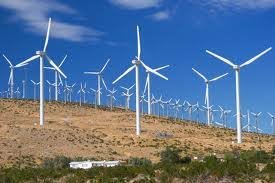
Wind power plant
The Islamic Republic of Iran is one of the countries with abundant energy resources and after 1913 has always been considered as one of the main exporters of oil. Due to being located between the two major energy sources in the world (Caspian Sea in the north and the Persian Gulf in the south), it has a special place at the international level. One of the important points is that it is one of the two countries that is able to independently and directly export oil and gas extracted from the huge source of the Caspian Sea, which, of course, is due to the short distance from its export rival Russia. It can, it can surpass. [1]
Iran's average daily oil production in 2005 was about 4 million barrels. Of course, the maximum daily production of Iran dates back to 1974 with a figure of 6 million barrels, which after the revolution in 1978, according to the policy of reducing production, and on the other hand with the start of the Iran-Iraq war and damage to mining facilities The rate dropped even more. On the eve of the 2000s, the process of oil production in Iran became increasingly ineffective, one of the main reasons being the lack of necessary technology in this field. As a result, a small number of wells were drilled in 2005 to explore new resources.
Iran has 10% of the world's discovered oil resources. In addition to concentrated oil resources on the shores of the Persian Gulf, Iran also has resources in the north of the country. Iran also has the second largest natural gas resources in the world with 15% of the world's gas resources, most of which is used for domestic purposes. However, Iran spent about $ 4 billion on fuel imports in 2005, mainly due to a lack of refineries, fuel smuggling, and low household efficiency, which are generally due to fuel subsidies.



